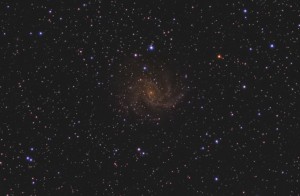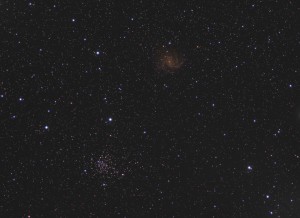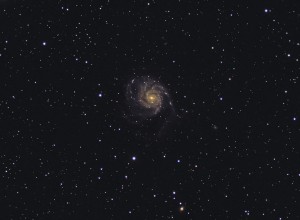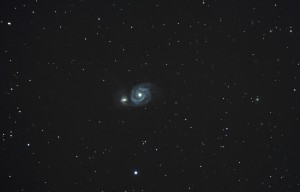As April is mere hours from becoming May, I am surprised and disappointed that I still haven’t been able to get out for a real night of astronomy. Setting up this blog was exciting in February and March in anticipation of getting out, but at the end of April, it is the tiniest bit sad…
However, here we go anyway.
On an EQ-G, initial polar alignment of the mount can be achieved through the polar alignment scope and EQMOD’s polar alignment utility. Through a simple series of steps, EQMOD will end up placing an alignment circle in the appropriate position. The operator then uses the mount alt and azimuth controls to move Polaris into the small alignment circle, and polar alignment should be achieved to the inherent level of accuracy allowed by this method. There are some nice pictures of the results in my previous post. This is the approach I have used prior to this year, but I don’t really know whether it is good enough.
From reading various yahoo groups, I suspect the majority of contributors would think that polar scope alignment method is not good enough for long exposures, and particularly, not good enough for long exposures at 1625mm focal length. Additionally, a disadvantage of using the EQMOD utility is that the alignment must be completed without having the gear fully loaded on the mount, or the gear may collide into the tripod/pier. Further, some suggest that fully loading the mount may induce some differential flexure and affect polar alignment. Also, this approach means that the gear is always being set up after dark, after Polaris becomes visible in the polar scope. The budding photographer may, at times, prefer to get set up before dark.
As an alternative to the polar scope alignment method (which is certainly more than adequate for visual observing), there are also software tools available that can make use of the main telescope to assist in polar alignment. Here is one nice reference on polar alignment software. For the most part, these polar alignment software tools fall into two main categories. The first category relies on evaluating the difference between actual star positions and expected star positions to calculate any polar alignment corrections that are needed. The number of iterations required for an adequate result is based on the accuracy of the initial rough polar alignment. The second software category is a software-assisted drift alignment – a method that relies on observing the path a star deviates from its expected path over time, then calculating needed alignment corrections.
One software tool, Alignmaster, is a member of the first category. I have only briefly tried to use this so I have yet to form a solid opinion. Very first impressions are:
- The “best” star pairs it wants you to use are often quite low to the horizon and hard to locate
- It does not attempt to use any installed cameras, so these must be driven by other software (or you could use an illuminated reticule and do it visually)
- If it works and is accurate, it is likely to be substantially faster than software assisted, drift alignment software
- Some people in the “groups” say it works great
There are number of examples of the category 2 software, with prices ranging from “free” to $150+. In several cases the polar alignment function is just one of a suite of programs included in the package. While my instincts are to purchase the most expensive package first, maybe, for once, I will start instead with a free one. One example of this program is EQ Align. Although it sounds like it might be a member of the EQMOD family of software, it is not. Again, based on no actual experience to date:
- This software can fully integrate with both the mount and the camera
- There are comments about earlier versions being buggy, but also those bugs have been resolved and the developers are very responsive
- The program was developed in Spanish but is largely translated and seems fully usable to a non-Spanish speaker
- The drift method is generally acknowledged to be the most accurate alignment method, but does take some time, because as the name implies, it depends on tracking how far a star drifts over time
In summary, the initial strategy I plan to follow is to switch my polar alignment method from the use of the polar scope to the use of a software assisted method described above. Initially, it will be necessary to master the techniques in these methods and become proficient enough to be able to form an opinion as to which method is “good enough”. Obviously the polar scope can still be used to approximate polar alignment by estimating the position of Polaris through the scope. But the step of actually rotating the polar scope to align the correct hour-angle actually be done, and a visual approximate will instead need to be employed.
Hopefully, I will be able to report some initial results on these approaches soon… and also to comment on first light on my now 6-week old AT8RC.




